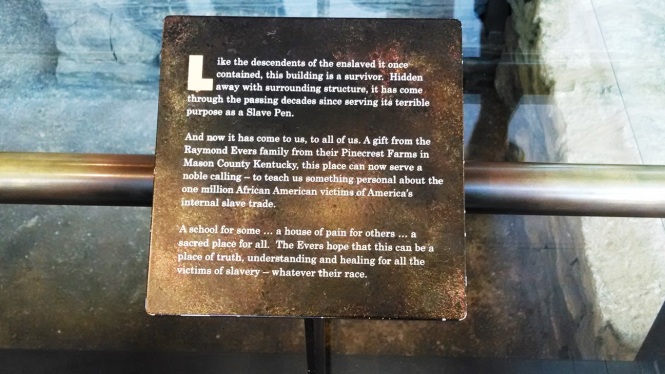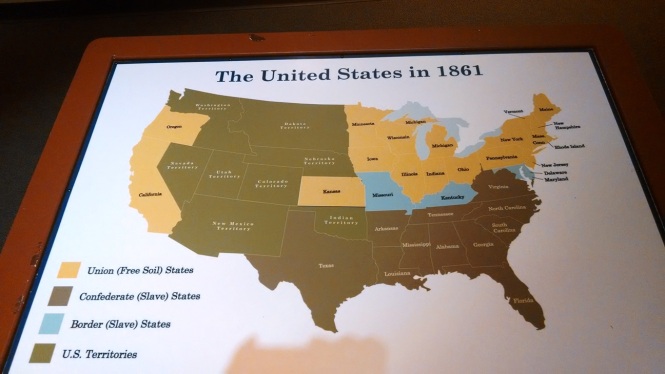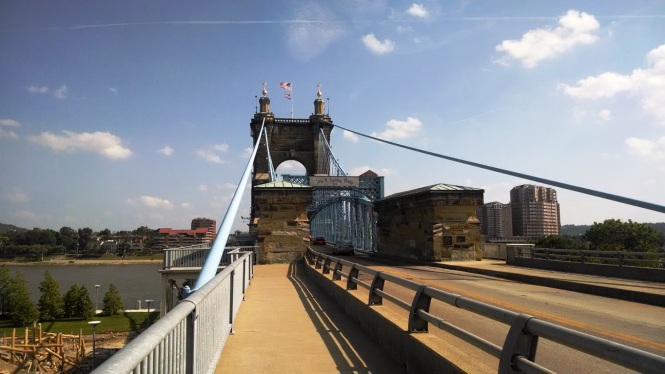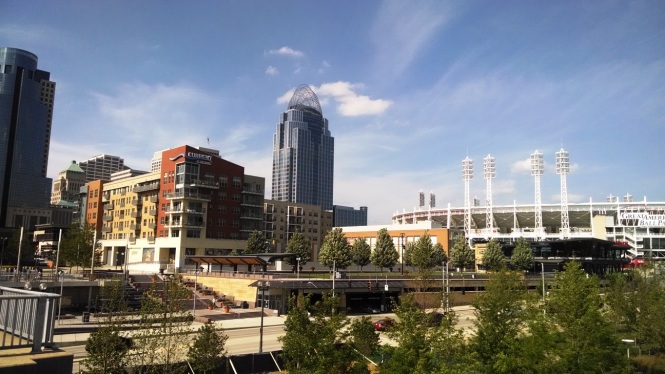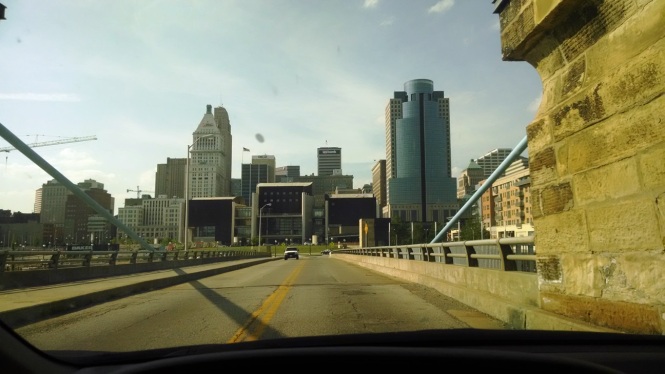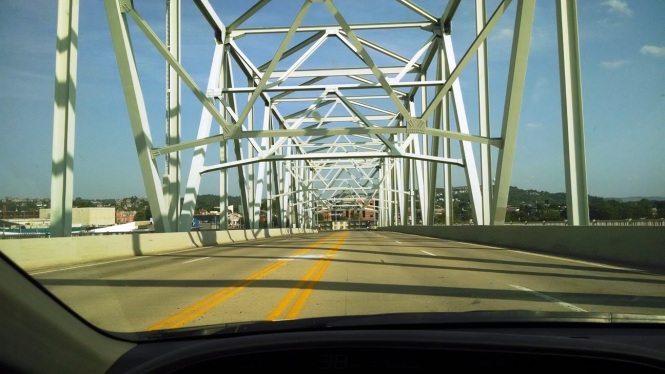“If we investigate the origins of the Felahim [Palestinians], there is no doubt that much Jewish blood runs in their veins.”
-David Ben Gurion, (first) Prime Minister of Israel (1948 -1953, 1955 – 1963)
The more I learn about the different groups involved in the Israeli-Palestinian conflict, the more interesting the whole situation becomes. There’s also plenty of irony to be discovered in the claims and policies of Zionists, Christian Zionists, and the Israeli government. For example, wouldn’t it be ironic if some Palestinians are more Jewish than some of the Jewish citizens of Israel?
Introduction
It’s no secret that Israel has billed itself as “a Jewish State” for decades. Of course, this idea has created a dilemma, to say the least, for Arabs, Bedouin, and other non-Jews living in Israel and the Palestinian territories. How do non-Jews fit into “the Jewish State of Israel”? (For a parallel, imagine if America was called “a Caucasian State.”)
The ideal of “a Jewish State” apparently runs along ethnic/racial lines more than religious lines. According to Wikipedia, 43% of Jews in Israel identify as secular, and 47% of these secular Jews (i.e. 20% of all Jews in Israel) are Atheists. Only a slight majority of Israel’s Jews consider themselves to be religious.
Israel’s aim to be a Jewish state is instead a battle drawn up along ethnic lines. However, as was pointed out in an earlier article (“Who Are the Jews in Israel Today?“), a case can be made that a significant percentage of Jews in Israel are descendants of Gentile (non-Jewish) converts to Judaism centuries ago. Not only are many Jews in Israel non-religious, but many are also non-Semitic. Yet they are more than welcome in “the Jewish State.”
Another irony is that many with a Jewish background are destined to be excluded from “the Jewish State” – because they are identified as Palestinians. It’s shameful that this exclusion – of all Palestinians – is fervently supported by the Christian Zionist movement.
Hillel Fendel’s Article in Israel National News
There’s a lot to consider in the following article published in Israel National News in 2009 (“Arabs of Jewish Descent in Israel“):
Up to 85 percent of Arabs in greater Israel stem from Jewish ancestors, it is estimated. Some of them want to become fully Jewish, but most are scared to even talk about it.
“In our search for the lost Ten Tribes in India and Afghanistan, we seem to have forgotten to look for their descendants in our very own backyard.” So says the narrator in a new film about the efforts of a former hi-tech pioneer named Tzvi MiSinai to search out the Jewish roots of Israel’s Arab enemies – and to inform them of their Judaic heritage.
MiSinai has spent about a half-million shekels, he estimates, on these efforts. They include visiting dangerous places deep inside Palestinian Authority-controlled territory, hearing the stories of Arabs who remember observing Jewish customs, and distributing literature to Jews and Arabs alike.
One Arab says his father told him the secret of his family’s Jewishness on his deathbed, while another one, on the backdrop of a photo of the saintly Cabalistic sage Rabbi Abuchatzeira on his wall, says their roots have been known in his family for generations. Wrapping what apparently used to be kosher tefillin on his arm, he says, “My father used to do this, and he taught us to do it whenever someone was sick or in trouble.”
The Jews Who Didn’t Leave
It is generally accepted that most Jews left the Land of Israel after the failed Bar Kokhba revolt in 135 CE. Yet many remained, and of these, many are still here, after having been forced to convert to Islam. “It turns out that a large part of the Arabs of the Land of Israel are actually descendants of forced converts to Islam over the years,” says Rabbi Dov Stein of the nascent Sanhedrin rabbinical council. “There are some studies that say that 85 percent of the Arabs in Israel are descended from Jews; others say there are fewer.”
Ben-Gurion Agrees
The claims are not new. Early Zionist leaders David Ben-Gurion and Yitzchak Ben-Tzvi wrote in a book 100 years ago: “If we investigate the origins of the Felahim, there is no doubt that much Jewish blood runs in their veins.” The authors implied that these Jews loved the Land so much that they were willing to give up their religion. The reference is probably to an edict in the year 1012 by Caliph el-Hakim, who ordered the non-Muslims to either convert or leave the Land of Israel. It is estimated that 90 percent of the Jews chose the former, though many continued to practice Judaism in secret. The decree was revoked 32 years later – apparently too late for about 75 percent of the converts.
Tzvi MiSinai continues to convince Arabs in Judea and Samaria that they are likely Jewish. The film shows him passing through the Gush Etzion checkpoint and distributing pamphlets both to Israeli soldiers – “so that you’ll know who you’re checking here” – and to the Arabs waiting there – “so that you’ll know who the majority of you are.” Asked by an Arab if he is from the peace movement, MiSinai answers, “Yes, yes, peace, so that we can live together as one nation.”
The Sawarka Bedouin Jews
One place where MiSinai has apparently found very strong Jewish roots is in the Bedouin tribe known as the Sawarka. There are about 3-4,000 of them throughout the Sinai and the Negev, and they “are all Jewish,” says a tribal leader in perfect Hebrew. With his face camouflaged for the cameras, the Bedouin says, “They had no choice but to convert; this was centuries ago… I remember my mother and grandmother wouldn’t light fire on Sabbath, and they had a special mikveh…”
Others, in a Bedouin village east of Hebron, also remember burning a small piece of dough (reminiscent of the Biblical command to separate a small piece of dough when baking bread), lighting candles at graves, and tearing clothes and sitting shiva for seven days, and not three as is Muslim practice.
Even today, ritual circumcisions are carried out after the seventh day of birth. Many homes in some of the Arab villages have doorpost indentations for a Mezuzah, with a scroll placed in some of them.
In another village just south of Hevron, Muhammed Amsalem – a descendant of Spanish Jews – told Aharon Granot of Mishpacha magazine that everyone in town knows he and his clan are Jews: “Our elders tell us that our forefathers came to this land during the [15th century] Spanish Inquisition, via Morocco. They settled in Ramle. Then the Mamluks forced them to convert to Islam, and they moved to the South Hevron area.”
Amsalem says they decided to reveal their Jewish roots after the 1967 Six Day War when they learned that a Jewish community had been reestablished in Hevron. “But the Jews saw we had no knowledge of their religious practices and refused to accept us… If the Jewish community would be willing to receive us today, we would join them with great enthusiasm.”
In the area of the South Hevron Hills, half of the Arabs are aware of the Jewish origins. They used to talk about it openly, though no longer. One man who recently publicized a silver Chanukah menorah that had been passed down to him from his father and previous generations was hung by terrorists by his feet for six weeks, leaving him with permanent injuries.
Genetic Studies Back Claims
At the Hadassah Medical School labs, Prof. Ariela Oppenheim of Hebrew University performed an international genetic study that backs up conclusions of Jewish-Arab genetic similarities. “We found that despite the dispersion of Jews around the world for 2,000 years, they essentially kept their Jewish continuity,” Oppenheim said. “In addition, we found that the Jewish population is surprisingly close, genetically, to the Arabs living here in Israel.”
She said that the study shows that both the Arabs of Israel and the Jews are descended from the Kurds of Aram in Babylon – the birthplace of the Patriarch Abraham.
“It’s clear that we’re all from the same family,” Oppenheim concludes. “Most unfortunately, however, there are conflicts even within families, and sometimes brothers fight as well. I wish this is what will bring the Redemption, but I’m very sad to say that I don’t think so.”
Some Want to Return to Observant Judaism
South of Hevron, in Yatta, there is a large formerly-Jewish presence – and some even want to return to active Judaism. It is widely known there that half the residents are of the originally-Jewish Mahamra clan – a name that means “winemaker,” a trade that is forbidden according to Islam. “The people in these areas converted to Islam later in history,” MiSinai says, “and therefore more customs and knowledge and artifacts have been preserved.” These include Jewish stars over the entrances to homes, while in at least one house, the family has hidden a mezuzah and tefillin in creative hiding spots. One man pulled out a small Hebrew booklet of Psalms and Tanya with which he says he continues to secretly pray.
Miro Cohen, a Jew from Tekoa, in eastern Gush Etzion, is very friendly with the Arabs in a nearby village known as Kawazbe – a name that he and they agree is merely a corruption of Kuzeiba, the original name of the famous Bar Kokhba.
“These people are the descendants of Bar Kokhba,” Cohen declares. One Arab sitting with him can count his ancestors eight generations back, ending with a grandfather named Kawazbeh. Another village elder says openly that his grandfather was a Jew who converted to Islam. Some of the residents want to return to Judaism; they don’t call it converting, because they are “already Jewish.” On the other hand, Arabs with the name Kawazbeh have been arrested for terrorist activity against Israel.
Other areas where Arabs of Jewish descent reside are Kfar Anzah in Samaria, Samoa in southern Judea, villages in the Tel Arad area, and more. Rabbi Stein says, “We know that up to about 200 years ago, the Galilee village of Sakhnin was a Jewish town, with an active synagogue. The Turks pressured them to convert to Islam, but the people there know that they are of Jewish origins.”
Rachel Avraham’s Article in the Jewish Press
There are also a number of things to consider in the following Jewish Press article published on January 6th, 2015 (“Most Palestinians in Judea and Samaria Were Formerly Jews“):
As a journalist, I was always very skeptical what the origins of the Palestinian people are. Some have argued that the origins of the Palestinians date back 1,000 years. Others claim that the ancestors of the Palestinians came much more recently, during the late Ottoman and British Mandate periods. And still others allege that the roots of the Palestinian people in the Holy Land are ancient. So what are we to believe?
The American archeologist Eric Cline reported in his book, Jerusalem Besieged: “Although some would disagree, historians and archeologists have generally concluded that most, if not all, modern Palestinians are probably more closely related to the Arabs of Saudi Arabia, Yemen, Jordan, and other countries than they are to the ancient Jebusites, Canaanites, or Philistines. The major movements of those Arabs into the region occurred after 600 CE, more than 1,600 years after David and the Israelites had vanquished the original inhabitants of the land.” This fact is confirmed by Sherif Hussein, the Guardian of Islamic Holy Places of Arabia, who stated that the Palestinians ancestors had only been in the region for 1,000 years.
Numerous scholars have reported that following the Black Plague and Crusades in 1517, only 300,000 people were left in the Land of Israel, of whom 5,000 were Jewish, and that many of the ancestors of the modern Palestinians came in the late Ottoman and early British Mandate period. During the British Mandate period alone, 100,000 Arabs from neighboring countries immigrated to the Holy Land.
However, after conducting intense research into this issue, another story for the origins of the Palestinian people has appeared which further reaffirms Jewish attachment to the Holy Land. A Palestinian living in Jerusalem who wishes to remain anonymous has confessed in an exclusive interview that this persons’ family origins are 100% Jewish and that this person’s father’s family were Cohanim. He proclaimed: “Most of the Palestinians in Judea and Samaria are former Jews. The Ottomans converted them by force. My family converted to Islam in the early 1900’s.”
This Palestinian explained that the town where this person originally came from and the seven surrounding villages had a Jewish majority up until the early 1900’s: “My grandparents tell me they were born Muslim. The entire town which is Islin and the entire collection of towns near Beit Shemesh were Jewish. The entire towns around us used a Jewish judge known as Khawaja Kakum, who was a rabbi.”
The Palestinian noted that in the late 1800’s, the Ottoman Empire started to pressure the local population to accept Islam, after Herzl informed the Ottoman Sultan of the Zionist movements’ intentions. This resulted in the Sultan going crazy and making sure that would not happen, although he did refrain from issuing a formal edict of conversion: “The Ottoman soldiers would arrive, investigating and making sure everyone was Jewish and that would involve a humiliating act. The locals would have to bring all of the fancy rugs so the soldiers could use them. They had to fix hay mixed with sugar for the horses of the Ottoman cavalry. And then, the locals had to cook food for the soldiers. They were forced to mix yoghurt with lamb in a dish known today as mansaf.”
The Palestinian noted that Bayt Itab, which was near Beit Shemesh, was inhabited by Sephardic Jews: “A particular family in the town began holding Friday prayers on both Friday and Saturday, so the Ottomans would be fooled into believing that they were not Jews. Now Beit Shemesh, another nearby town, had mostly Jewish families that would later on become Palestinian, except for one family.”
“Many Jews would never believe this but if you visit Zora; you will see the tomb or grave of Samson the Great,” the Palestinian noted. “You would learn that Palestinians used to glorify this man in this town. Whenever someone dies, Palestinians used to sing in sadness for him: ‘Oh my G-d, why have you taken him, he has never displaced his grandmother or given advice to a Muslim.’ Why would Muslim Palestinians sing folk songs like that?”
“One of the folk songs for children goes: ‘By the G-d of Moses, don’t make me lose my way,’” the Palestinian explained. “Why not Muhammed? Also, the local comments reflected in the entire Palestinian community used the term ‘he’s a Cohen’ to reflect someone who is wise or who could see stuff others could not see. Most Palestinians don’t know what a Cohen is. Why do they use the term ‘he is a Cohen’ to describe someone with G-d given knowledge?”
While such statements go contrary to pan-Arab propaganda and the standard Middle Eastern history books taught across the globe, this Palestinian is not the only one to make this claim. According to the Jerusalem Post, Tzvi MiSinai conducted research into the Jewish roots of the Palestinian people and discovered that 90% of the Palestinians have Jewish roots: “And what’s more, half of them know it.” He noted that many Palestinians maintain Jewish customs, including mourning rituals, lighting Shabbat candles and even wearing tefillin.
Misnai is not the only researcher to believe this. Genetic studies conducted by Hadassah Medical School found that the Jewish population is surprisingly close genetically to the Palestinian population, implying that many of them have Jewish blood in them. Israel’s first Prime Minister David Ben-Gurion evidently agreed that most Palestinians have Jewish roots, according to Arutz Sheva: “If we investigate the origins of the Felahim, there is no doubt that much Jewish blood runs in their veins.”
…Caliph El Hakim forced all of the Jews of the Holy Land to either convert to Islam or leave the country in 1012 and the Crusaders massacred numerous Jews in the Holy Land in the late medieval period. He maintains that until the British Mandate period, the influx of Muslims into the Holy Land was minimal and most of the locals had Jewish roots.
“When General Allenby, the commander of the British military forces, conquered Palestine in 1917/1918, only a few thousand Muslim Arabs resided in the Holy Land,” Mandelbaum writes. “Most of the Arabs were Christians, and most of the Muslims in the area either came from Turkey under the Ottoman Empire, or were the descendants of Jews and Christians who were forcefully converted to Islam by the Muslim conquerors.”
However, despite the massive influx of Muslims into the Holy Land during the British Mandate period, the Palestinian interviewed proclaimed: “I don’t know of a Palestinian family who does not have a Jewish story to their history. Just like Jews were forced to convert to Christianity in Spain, they won’t ever go back, but it would be helpful to remind us publicly of whom we were and what we were, to show that we must connect as humans.”
This Palestinian explained that both sides made mistakes in the years leading up to Israel’s establishment and afterwards. The Zionist movement did not recognize the Palestinians as having Jewish roots in their family while emphasizing that both sides suffered from anti-semitism and the Palestinians themselves also very much looked down on the newcomers from Europe. But this Palestinian hopes that this information can help bring the two peoples together at the very least to pursue peace in the future: “Unless we study our past, we won’t move forward to the future.”
About the Author: Rachel Avraham is a news editor and political analyst for Jerusalem Online News, the English language internet edition of Israel’s Channel 2 News. She completed her masters degree in Middle Eastern Studies at Ben-Gurion University. The subject of her MA thesis was: “Women and Jihad: Debating Palestinian Female Suicide Bombings in the American, Israeli and Arab media.”
Conclusion
Whether “most” Palestinians have a Jewish background, or only a minority of them do, this information adds further irony to the Israel/Palestinian conflict. The Zionist/Christian Zionist agenda sidelines Palestinians, some of whose ancestors were ethnic Jews, but embraces those currently identified as Jews, even if they have no Jewish blood. It should be pointed out that plenty of Jews are opposed to the Zionist agenda. See this post, for example: Dueling Jewish Perspectives on the Israeli/Palestinian Conflict.
Followers of Christ, in particular, should have nothing to do with an agenda that sidelines or oppresses anyone. As the apostle Paul wrote to the Galatians,
“Therefore, as we have opportunity, let us do good to all, especially to those who are of the household of faith” (Galatians 6:10).
——————————————————————————–
Here are two more articles dealing with this subject:
[1] “The Shared Genetic Heritage of Jews and Palestinians” (at Patheos Blog)
[2] “The Lost Palestinian Jews” (at The Jerusalem Post)










